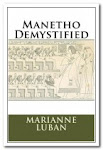As an addendum to another archived post here, "Who Is This Mummy", I saw something in an old book by Georges Legrain that makes it quite certain that Amenhotep I really did have a son called Ahmose-Sipair, who did not live to succeed him. This is evidenced from the stela of someone called Padu from Gournah which says "the Good God, Djeserkare, son of Re, Amenhotep", which is followed by "king's son, Ahmose-Sipair". In the same book there is another stela of someone named Kenres, who is adoring Ahmose "Dd=f sApAir", which means "Ahmose called Sipair". This indicates that the given name of the prince was Ahmose but he was also known as Sipair for some reason.
In the tableau in the tomb of Inherkhau the prince is seated at the end of the first row of 18th Dynasty kings and their queens. While there is another prince in the second row [whose entire name does not survive but ends in "ms"], Sipair actually holds a crook and flail like a pharaoh while the other merely holds a flower. This time he is styled "Osiris Sipair", the sole individual to be called "Osiris", although all the royal persons in the tableau known as "The Lords of the West" are dead. The 20th Dynasty Papyrus Abbot, when mentioning his tomb, also refers to Sipair as "king". Prince Sipair was reburied by Butehamun, a scribe in charge of dismantling the Theban necropolis, whose sovereign instructed him to strip the "ancestors" of their wealth for his own profit at the end of the 20th Dynasty. On Butehamun's coffin, in the Turin Museum, Sipair is there among the royals that Butehamun "restored" and he is shown as an adult, as he is on other artifacts. The other royals depicted on Butehamun's coffin are Amenhotep I, Queen Ah-hotep, Queen Ahmose-Nefertari, Queen Sitamun and Queen Meryetamun. Queen Ah-hotep was a relative of Amenhotep I, (possibly even his chief wife) Ahmose-Nefertari was his mother, and Sitamun and Meryetamun apparently sister-wives of the pharaoh.
Obviously, there is something unusual about this Ahmose-Sipair. Does he hold the crook and flail because he was already a co-regent with his father at the time he died--even though he is depicted wearing only a princely side-lock? Another mystery of ancient Egypt.
Wednesday, April 25, 2012
Subscribe to:
Post Comments (Atom)








No comments:
Post a Comment